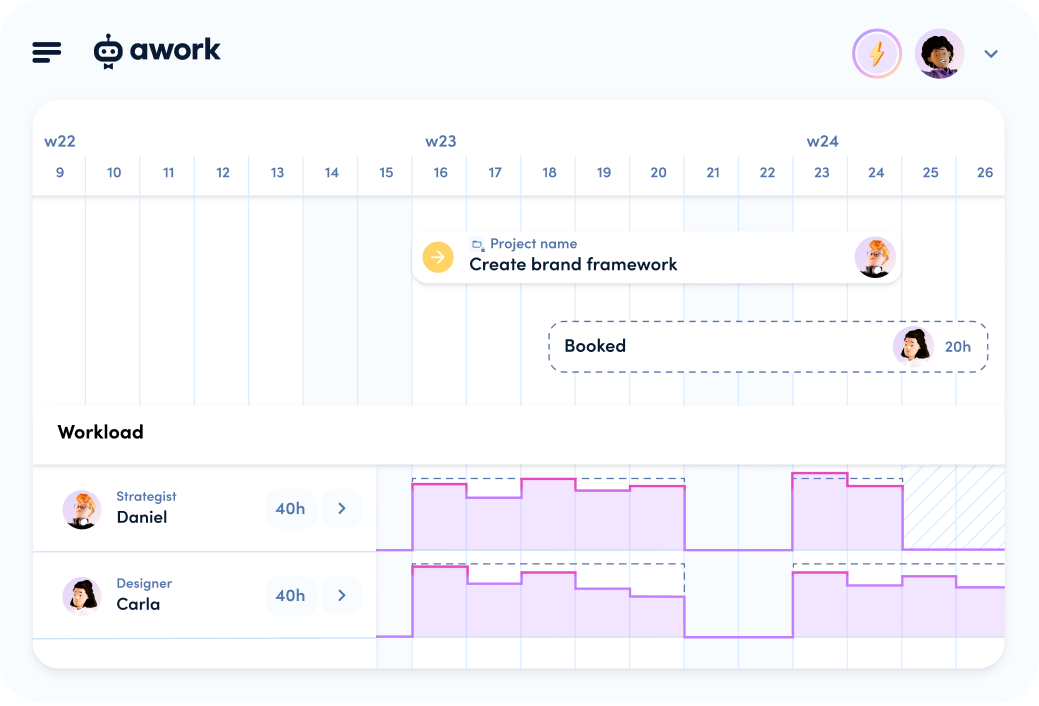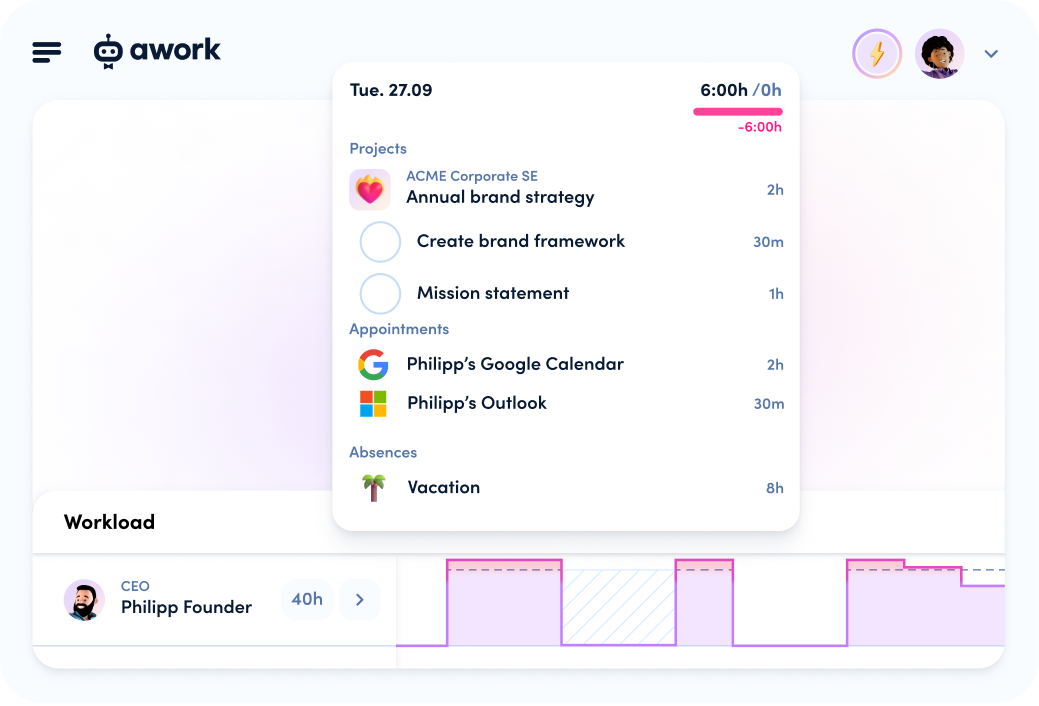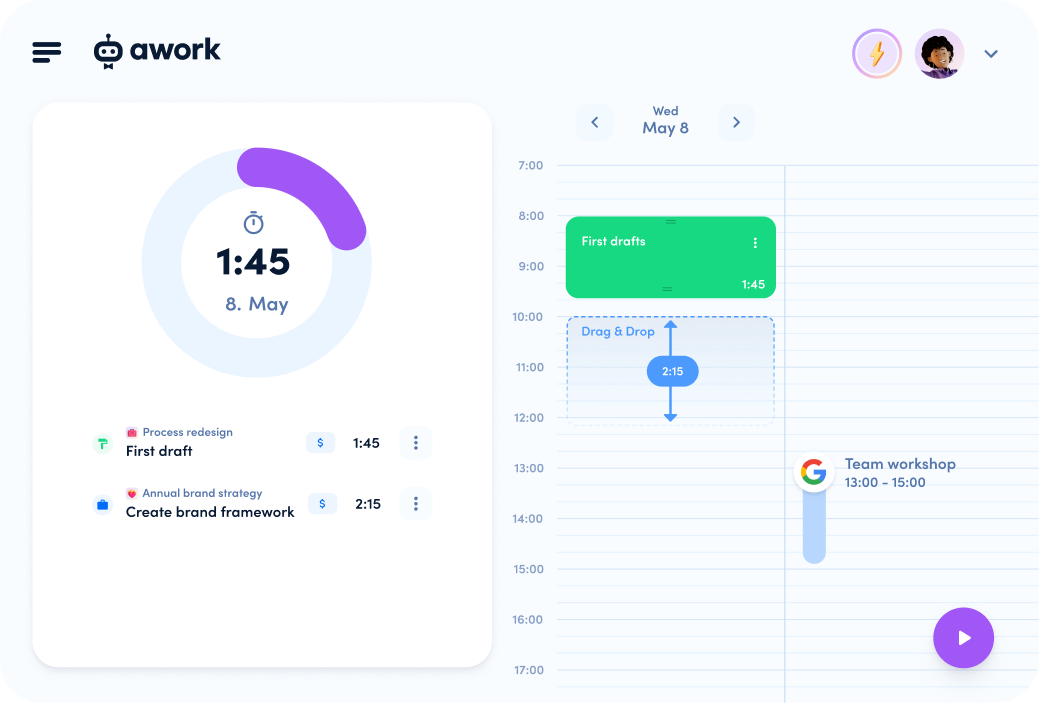Project management and work management are two terms that are regularly heard and used, but often, many people don't understand the differences. These terms lead to confusion again and again and are sometimes used in the wrong context. In this article, they will be explained thoroughly to help you differentiate between the two.
What is classical project management?
The difference between project management and work management lies in principle in the different applications in which the methods are used.
Project management (PM) is an organizational method for one-time projects. This means that these projects have deadlines. They are limited in time and are completed within this timeframe.
In PM, certain methods are used to plan, control and execute a project. The project manager's task, together with his project team members, is to work together to achieve all project goals and milestones. The success of a project is defined by a clear goal. Therefore, teams working on such projects are also short-lived. However, care should always be taken to ensure that the skills of the employees complement each other. This is the only way to create a cohesive project team. Here's an example to help illustrate this:
Project target
There is a new assignment in your agency. You are assigned to set up a complete marketing campaign for a new major client and create a design for their new product..
Project structure
For every project, there is a responsible person, in this case, the project manager; let's call him Markus. He makes sure that everyone in the team knows what they are responsible for, supports each other and that all deadlines are met. Markus starts by creating tasks for this project, putting together a team, and distributing these tasks among the various colleagues. Larissa, Max, and Julia are tasked with creative brainstorming, formulating ideas, and creating the campaign. Björn takes care of the appropriate design.
This organization is the only way to work productively on the project. Otherwise, the employees would possibly hinder each other, work would be done twice on one task, or a task might even be forgotten entirely. Of course, the example from the agency chosen for clarification describes the ideal situation. In reality, Max and Larissa also have to manage a second important project, which means that the entire planning process can be thrown into disarray from time to time. This is where the right software can help with project organization. After all, we all know that such helpers are essential, give us structure and save us from forgetting something important every now and then.

Methods in project management
Ideally, every employee working on a project is aware of who is responsible for which task at all times, thanks to the chosen method.
The Gantt chart
A popular method is, for example, the Gantt chart. This is a particular form of the bar chart. It graphically represents all the scheduled activities of the project. This allows for the progress of a project to be visualized exceptionally well. In addition, it also serves as a suitable means of communication between the project stakeholders.
The network technique
Another method is the network planning technique. It is used to organize the planning and control of projects. This method shows the logical and temporal sequence of sub-processes, also through a graphical representation. Individual sections of a project are considered, and these are arranged chronologically. Thus the network offers, among other things, a detailed time analysis.
So what does work management mean?
Work management methods would also help us in our current day-to-day business. Because here, too, there are a lot of work processes that can be standardized. Project management has exemplified how much better we can work with structure. For example, we could implement this knowledge in the daily work routine and thus structure ourselves more efficiently. For example, in internal marketing, it would also help to discuss internal projects, topics, and deadlines, define contact persons and assign tasks to each other.
In work management (WM), the well-thought-out methods from project management are transferred and applied to the current day-to-day business. The primary goal is not to complete a project but rather to optimize the internal productivity culture. This includes the general daily organization of work, as well as reliability in the processing of tasks, consultation between the individual departments involved, and compliance with internal and external deadlines. In principle, the aim is to ensure that important information about internal tasks is presented clearly and transparently so that work can be carried out in a structured manner within the team. Of course, these can also be recurring tasks. These would be, for example, the weekly or monthly newsletters that have to be created and sent out for a customer.
Method in work management - The Kanban Board
One popular method in WM is the Kanban board. The workflow is clearly visualized with their help. The tasks are divided into process phases. Mostly consisting of divisions into "to be done," "in progress," and "done.". Each task must therefore pass through these phases. This makes it clear at a glance which and how many tasks are in a certain phase. This knowledge can then be used to assist in planning further.
With the help of good work management like awork, the information transfer from individual business processes is improved so that organizational challenges can be better mastered. But how can this be applied in a company in concrete terms? To illustrate this, let's take another look at the agency:
How can the team in the agency work together more productively through work management?
In a good WM, the handover of compact tasks is an important component. Within these tasks are detailed information, deadlines, previous activities, and contacts. For example, Larissa from the marketing team communicates with Tom from the HR department via a work management tool. She informs him in the created task that this job has been completed, that she has feedback on this task, or that the job posting has been released. It is particularly efficient if all relevant information on the tasks can be clearly stored in the WM program. Thus, all relevant documents, any agreements, and deadlines can be found in the tasks themselves.
For example, if the job posting is concerned, then both Larissa's text and Tom's comments are stored in a new document in the appropriate task in the work management tool. This means that both Tom and Maria now have a clear visualization of the status of the task and which documents belong to the task. The work process is thus also comprehensible for Larissa's colleague when she is filling in for Larissa during her vacation. This is extremely practical because it prevents duplication of work and, in turn, wasting time.
Better overview and transparency with productive work management
Last but not least, bosses also need an overview of all projects and the workload of their employees. In our case, it would be immediately apparent that Larissa has quite a few tasks to complete and, therefore, currently has no free capacity for a new project - unlike her colleague. Thus, the new important order could be distributed directly to the employees who are still available for new tasks. The transparency of a WM should also be emphasized. Everyone, including the bosses, knows the task status. Here, the focus is not on controlling employees but is primarily used to agree on tasks. Maybe some help or a second opinion is needed for one task, which could be seen directly and scheduled accordingly.
Work management with awork helps to avoid unnecessary or even duplicate work. This makes one's own daily work more reliable and comprehensible, also for colleagues and superiors. This is especially important for teams, as agreements are clearly and transparently displayed, and tasks can be worked on in parallel.
What does work management look like with awork?
awork helps you to organize yourself and your team better to help improve your workflow. It is a work management tool where you can create all your tasks for certain topics in a structured way. This is done in projects. Now, this may seem confusing at first glance, but the idea and implementation of project management has finally proven itself and, as you've seen, now makes sense in daily business. Therefore, awork works with the practical division of projects to better structure yourself and your team, allowing you to become more productive together.
In awork, you can create projects, invite team members, start creating tasks in those projects, and assigning the appropriate people to them. This way, everyone can see who is responsible for which task. It is particularly beneficial in that documents or files can be uploaded directly in the tasks, colleagues can be notified, and communication thus takes place in the task. This makes sure all your decisions on projects and tasks are always clearly documented.
[.b-button-primary] Curious? Try awork for free! [.b-button-primary]
Notifications and time tracking
To ensure that you don't miss anything, you will also be notified by email if you have been named in a task. But awork also lets you and your team know when there is important news. With these smart notifications, everyone knows about urgent tasks. If you are waiting for feedback from a colleague, you can easily assign the task to them, so they know immediately that they are now in charge of completing that task.
If you like, you can also easily record your times in awork. It will help you to get a better feeling of how long you need for some tasks. This way, you can plan better and be more productive. With awork, you can record your times by stopwatch, drag & drop, or directly from your calendar. Or you can start tracking your time with Google Assistant!
What makes team collaboration even simpler are the handy Zapier integrations! For example, you can create tasks in awork directly from a Slack channel or integrate your calendar.
Whether you're a freelancer, an agency, or a corporate team, awork is the smarter solution for future work organization and work management.
Let's keep in mind
Projects are limited in time and require a certain structure and organization to be carried out successfully. Specific project management standards have become established to help implement this. Work management builds on the idea of project management but organizes the internal communication in a company. This consists of managing the general day-to-day organization of work, reliability in processing tasks, consultation between the individual departments involved, and compliance with internal and external deadlines. In principle, the aim is to ensure that critical information needed to improve the workflow is presented in a clear and transparent manner so that work can be carried out in an efficient way within the team.
This organization avoids duplicate work and makes daily work more comprehensible and structured.























